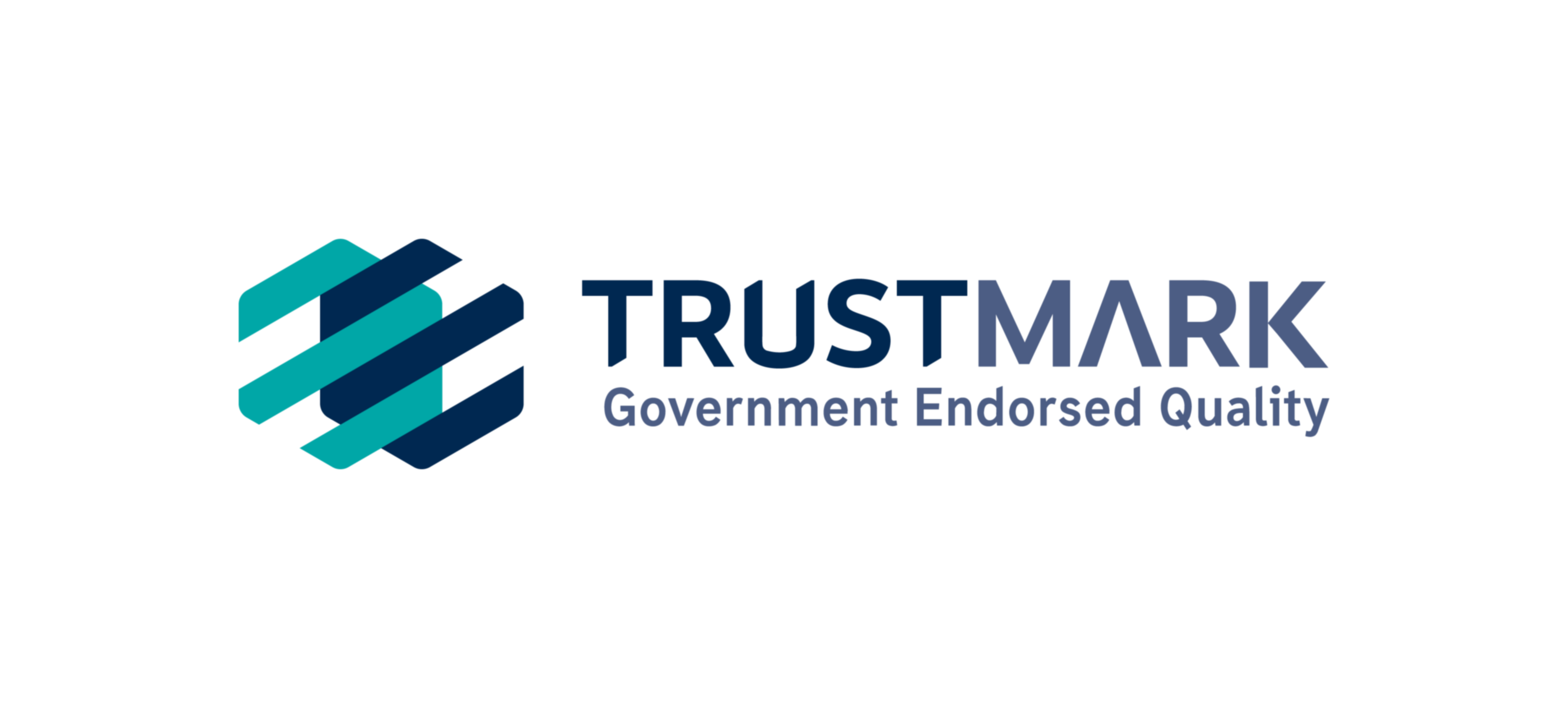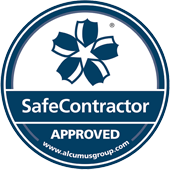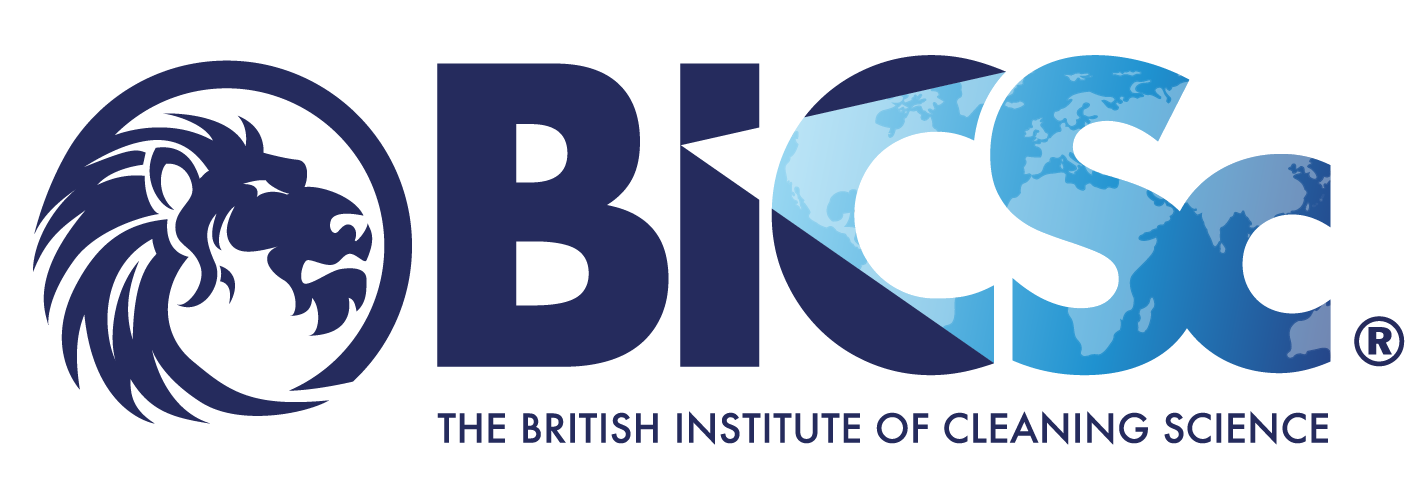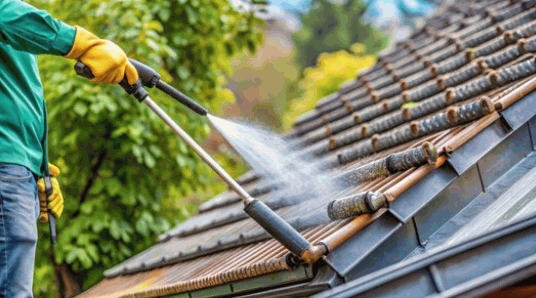
In our series of blog posts about roofs, we've covered a lot of subjects, answering questions like, "Is roof cleaning necessary?" and "Does moss damage roof tiles?".
Today, we're looking at the different methods used for cleaning roof tiles, so you'll have all the information you might need, whether you're thinking of hiring a professional or cleaning your roof yourself.
Before we jump in, we'll spend a few moments explaining just how your roof gets so filthy...
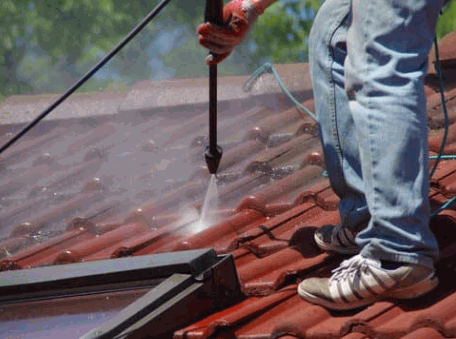
Basically, it's because of the weather, birds and airborne pollution! Over time, rain deposits a whole lot of dust and dirt on your roof. Each raindrop contains at least one dust particle and gathers more as it falls. The wind blows more dirt onto the roof surface, and organic growth (moss, lichen, algae and mould) blooms and thrives in damp conditions.
Shaded roofs overhung by trees never dry completely, creating ideal conditions for moss, algae and lichen.
Birds add to the problem by leaving their droppings, which are severely corrosive and will etch the tile surface, leading to further deterioration. Nearby trees drop leaves on your roof, and some of these will stick and begin to rot, becoming slimy and adding to the mould issue and growth of plant life.
So, after a few years, your roof tiles may not look too great!
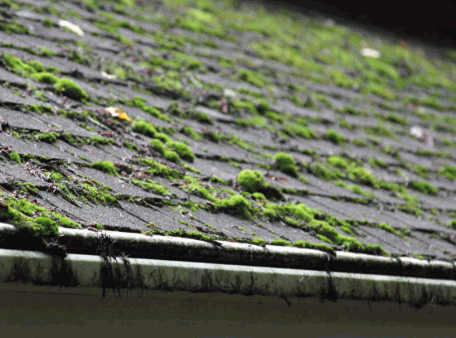
The appearance of your roof is one thing, but excessive dirt and organic growth can result in cracks and damaged tiles. In turn, this can cause water damage to the roof structure, as moisture leaks into the roof space.
Moss thrives on some roofs, especially around ridge tiles, usually along the mortar joints. Once it takes hold it can break down the mortar, making the tiles loose. A thick layer of moss adds a surprising amount of weight to your roof, potentially affecting structural integrity. Moss and algae also contribute to delamination, where the tile surface separates from the main bulk of the tile - this is particularly common in clay tiles.
Loose moss and debris also often block gutters and downpipes, adding to your problems!
Another important aspect of roof cleaning is that it gives you a chance to inspect and assess the roof's condition. Any broken tiles or damaged flashing can be fixed before it causes further damage
This makes roof cleaning a sensible and essential part of your home maintenance schedule that will extend its life expectancy and reduce the risk of expensive repairs, or worse - roof replacement!
Now we are aware of these facts, let's move on to look at cleaning methods...

This method involves cleaning roof tiles and removing moss by hand, using a stiff brush and a scraper that won't cause any damage. It's a good idea to rinse the roof tiles afterwards with clean water to remove dirt and debris.
These tools can be made from various materials (such as metal, silicone, plastic, or even wood) and usually have round edges, but it's important to use this tool correctly to avoid any damage. This means not applying too much pressure or being too vigorous! The Roof Tile Association warns against scraping because of the damage it might cause, but it all comes down to being sensible and cautious.
Ideally, the brush or scraper (or combination - some scrapers have bristles attached) should be attached to a telescopic handle allowing you to remove moss growth from ground level. If you do access the roof, use all necessary safety precautions.
Watch the weather conditions and pick a dry day, use a sturdy ladder and make sure you are secure at all times. Shoes with a good grip are also a sensible option.
It's a time-consuming job but is effective for getting rid of moss and algae. However, it won't tackle any stains or stubborn grime unless used in conjunction with other methods such as applying anti-moss treatments.
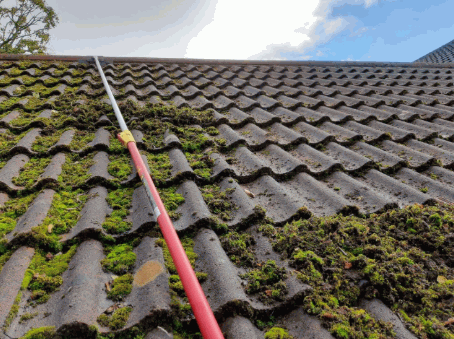
A favourite among many professionals, soft washing is a highly effective method that combines low-pressure water with a powerful cleaning solution that breaks down dirt and organic matter without causing the least bit of damage to the tiles.
This is another method that's suitable for all types, but especially more delicate surfaces without the need for aggressive cleaning methods. It also has a residual effect that will prevent moss and algae from growing back in the near future.
Soft washing equipment is available for hire, although you need to know how to use it safely and effectively, and most companies don't supply the cleaning solution, so you'll have to buy this separately.
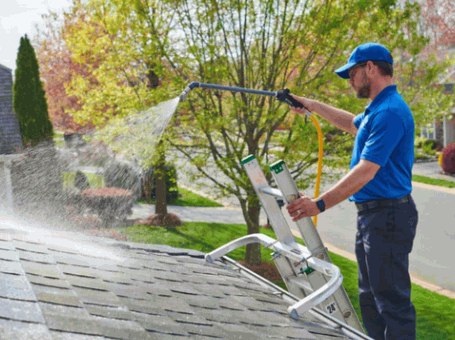
This is a bit of a controversial one, as many roofing experts and tile manufacturers warn against using pressure washers on roof tiles. We fully understand this at the Roof Clean Spray Team, as the high-pressure water jet from a pressure washer can damage tiled roofs if it's not used with care.
Using a pressure washer on concrete tiles can strip away the colour, and other types of tile often have a protective layer that pressure washing will remove if you're not careful.
Also, getting the equipment to roof level is tricky and fraught with hazards for the unprepared and inexperienced.
On the whole, our best advice is never to pressure wash your roof, unless you are absolutely certain that you know what you're doing and can access your roof safely. Even then, the pressure should be turned to a low setting and the wand used at the correct angle to avoid any damage.
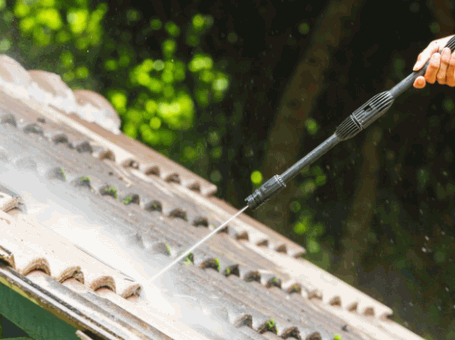
A water-fed pole is an extendable telescopic pole, usually made from lightweight materials like carbon fibre or aluminium, designed to reach high areas safely from the ground. The pole is connected to a supply of purified water, which is pumped through a system to a brush or nozzle at the top end.
Purified water is used as it is free from minerals and impurities that might leave streaks, and the brush has a filtration system to ensure that the water is deionised.
This means that no detergents or required, as the water lifts away dirt and grime, allowing it to be rinsed away.
To help things along, the nozzle has a special brush that allows the user to agitate moss and grime to loosen it.
Water-fed poles have two excellent advantages over other methods; the telescopic pole (extendable to around 60ft) allows the roof cleaner to remain at ground level, and it's an eco-friendly solution as no chemical cleaning agents are required, just pure water!
Don’t miss our post "What chemicals are used to clean roofs".
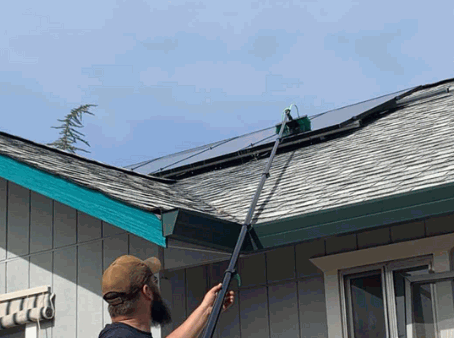
These specialist cleaning methods are both excellent, but generally more expensive and reserved for fragile, historical or heritage buildings.
TORC relies on a swirling vortex of low-pressure water, fine inert granules, and air to clean surfaces, while the DOFF system uses superheated water (up to 150°C) delivered at low pressure to clean surfaces without causing damage.
Both require skill and training to use, and they are not available for general hire to the public.
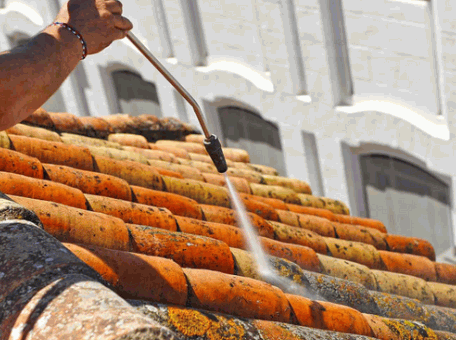
There are many good reasons why roof cleaning is a good idea, and we've explored a few methods of doing this.
The best option depends on your tiles, their age and condition, but one thing is clear: clean roofs last longer and look better than dirty ones!
Whether you clean roof tiles yourself or hire an expert is up to you, but remember - your safety is paramount, and accessing your roof is potentially hazardous.
When you need your roof tiles cleaned, the Roof Clean Spray Team is more than happy to offer professional advice and save you the hassle!


